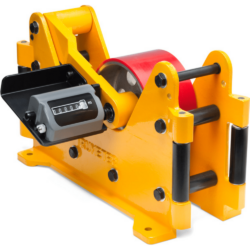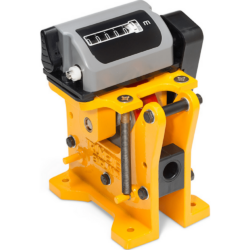Cable length measuring devices
Product type
Cable length measuring devices are special devices for precisely measuring the length of cables. They are particularly useful in electrical installation, telecommunications and network cabling.
Cable length measuring devices with mechanical totaliser
1. mechanical construction: These devices consist of a frame with a cable guide and a measuring wheel. The measuring wheel is connected to a counter that counts the revolutions of the measuring wheel.
2. totaliser: The mechanical totaliser is designed to register each revolution of the measuring wheel. As the measuring wheel has a certain circumferential length, the totaliser can calculate the cable length travelled by multiplying the number of revolutions by the circumference of the measuring wheel.
3rd use: To measure the length of a cable, the cable is pulled through the device. During the process, the measuring wheel rotates and the counter counts the revolutions. At the end of the measurement, the user can read the number displayed on the counter to find out the length of the unwound cable.
This type of cable length measuring device is easy to use and does not require an electronic power source. Therefore, these devices are particularly practical for use in various environments.
Stock variants


